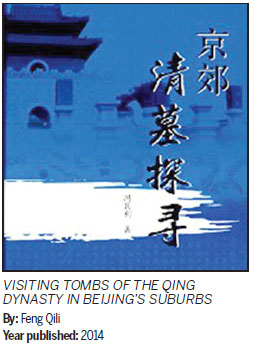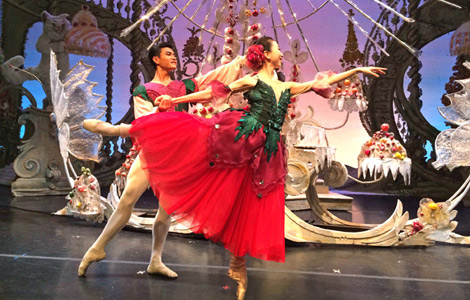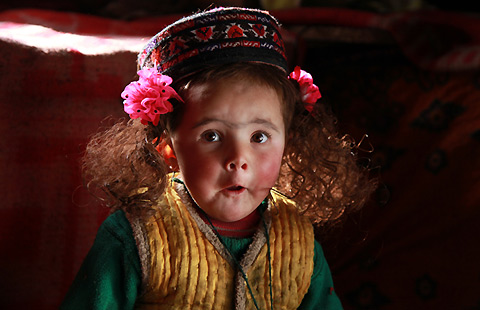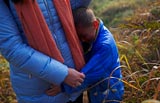A life lived among tombs memorialized
Updated: 2014-12-24 07:33
By Xing Yi(China Daily USA)
|
||||||||
Feng Qili spent his life studying those of the dead.
Specifically, he devoted himself to researching Qing Dynasty (1644-1911) tombs.
The 65-year-old self-taught expert on Manchu ethnic studies died on Nov 24, about five months after the publication of his latest book, Visiting Tombs of the Qing Dynasty in Beijing's Suburbs.
The books features 146 visits to Qing tombs belonging to royal families, prestigious officials and generals, and detailed information about the tombs' occupants.
"Feng was ethnically Han but was the first person to systematically study the Qing's Manchu imperial tombs," Beijing History Geography and Folklore Society secretary and Feng's friend of 30 years Chang Hua says.
"He's highly respected by the Aisin Gioro families, whose forebearers founded the empire."
Feng was born in Beijing in 1949 and worked at a refrigerator factory after high school.
He never attended university but devoted himself to higher learning.
He became an informal student of cultural scholar and historian Zheng Gongdun in 1978 and began to research the Qing era. He was drawn to the Qing tombs, which nobody had studied.
There were 12 Qing emperors and hundreds of royal family members buried in Beijing's suburbs. Their tombs were neglected and ravaged by the elements after the dynasty fell in 1911. Even the royal families' descendants forgot them.

In 1983, Feng began surveying the tombs during his spare time.
He pored over hundreds of historical documents and maps, and scoured every remote corner of the suburbs hunting for forgotten tombs.
When he found one, he'd consult scholars, descendants of the royal families and elderly villagers to confirm the occupant's identity. Pujie, the younger brother of China's last emperor, Puyi, told his family to help Feng.
Feng published his initial findings in his first book, Royal Tombs of Princes in the Qing Dynasty, in 1996. The book was celebrated by academics and the royals' descendants, many of whom consulted Feng to determine their genealogies.
Jin Cheng, the 14th-generation grandson of the dynasty's founder Nurhaci Aisin Gioro, hails Feng as "the imperial clan's living court", referencing a royal institution responsible for chronicling the Qing's genealogy during the dynasty.
Culture scholar and Feng's longtime friend Yang Haishan recalls: "He always said: 'I'm not an expert. I'm just an ordinary worker who enjoys studying the Qing Dynasty'."
Feng took a job at the Beijing Municipal Archives in 2000. He published another book, Visiting Royal Residences in Beijing, in 2006.
Feng continued his research after his 2012 retirement.
His student, Guo Yan, says: "He went to the Capital Library every day. So I always knew where to find him when I wanted to consult him. He was very kind. He put on no airs."
Chinese Commission for the International Council on Monuments and Sites member Zeng Yizhi says Feng collected many documents about the residences of individuals celebrated during the Qing period that are crucial to Beijing's heritage preservation.
"The best way to commemorate Feng is to edit and publish his unfinished works under his name," Zeng says.
"This enables more people to share his work. It provides a guide for those who come after him and continue his studies."
xingyi@chinadaily.com.cn
(China Daily USA 12/24/2014 page7)

 Christmas mood in the air across China
Christmas mood in the air across China
 Ethnic Tajik life through the lens of a solider (Part II)
Ethnic Tajik life through the lens of a solider (Part II)
 Top 10 international financial centers
Top 10 international financial centers
 Chinese dancer joins Nutcracker
Chinese dancer joins Nutcracker
 Learning, giving back through basketball
Learning, giving back through basketball
 Telling stories of the Chinese who fought for US
Telling stories of the Chinese who fought for US
 Top 10 economic events in 2014
Top 10 economic events in 2014
 Tajik herdsman's life through lens of a solider
Tajik herdsman's life through lens of a solider
Most Viewed
Editor's Picks

|

|

|

|

|

|
Today's Top News
Commerce decision said to hurt US solar makers
Aid to slain NYC officers' families unites city
Nicaragua canal project has nothing to do with Chinese govt: FM
China needs own metrics for corruption fight
Shanghai index slides 3%
Tollways report loss of 66 bln yuan
Learning about 'Americanness' from Chinese-American vets
Awaiting word from China on hack
US Weekly

|

|







